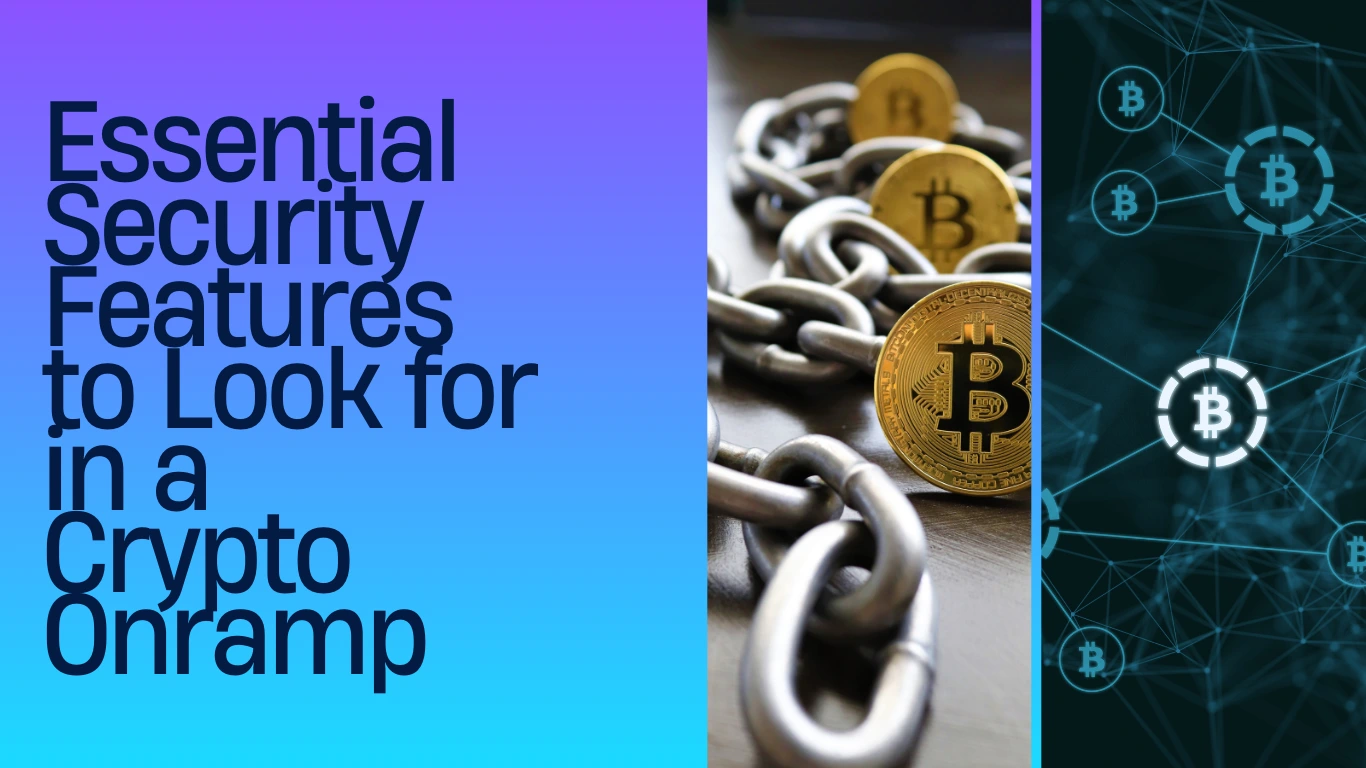Top Security Features to Look for in a Crypto Onramp

Top Security Features to Look for in a Crypto Onramp
As cryptocurrency adoption grows, the need for secure onramps becomes critical. A crypto onramp bridges the gap between traditional fiat currencies and cryptocurrencies, enabling users to buy digital assets with ease. However, with this convenience comes a heightened need for robust security measures. Below, we explore the top security features to ensure your transactions remain safe and your assets secure.
1. Two-Factor Authentication (2FA)
2FA in crypto transactions is a must-have feature for any reliable onramp. It adds an extra layer of security by requiring users to verify their identity through two independent factors
something they know (password) and something they have (mobile device or authenticator app).
- Why It’s Important: Even if your password is compromised, 2FA prevents unauthorized access to your account.
- Implementation: Look for onramps that support hardware keys, authenticator apps like Google Authenticator, or SMS-based verification (though the latter is less secure).
2. Secure Crypto Key Management
Private keys are the backbone of cryptocurrency security. A trustworthy onramp should emphasize secure crypto key storage and management.
- Cold Storage: Ensure the onramp uses cold wallets to store the majority of its assets. Cold wallets are offline, making them less susceptible to hacking.
- Hierarchical Deterministic (HD) Wallets: Some onramps use HD wallets to generate a new address for every transaction, enhancing privacy and security.
- User Responsibility: If the platform allows self-custody, it should educate users on how to securely store and back up their private keys.
3. Encryption Standards
Encryption ensures that sensitive user data and transaction details remain protected. Onramps should use advanced encryption protocols like AES-256 to secure data in transit and at rest.
- SSL Certificates: Verify that the onramp’s website uses HTTPS with SSL encryption to prevent data interception.
- End-to-End Encryption: Platforms that implement this for communication and transactions offer enhanced privacy and security.
4. Compliance with KYC/AML Regulations
A secure onramp complies with Know Your Customer (KYC) and Anti-Money Laundering (AML) laws. While these measures may seem cumbersome, they are crucial for preventing fraud, identity theft, and illegal activities.
- Identity Verification: Ensure the platform uses secure methods to verify user identities, such as biometric data or government-issued IDs.
- Privacy Protection: Check that the platform complies with data protection regulations (e.g., GDPR) to safeguard personal information.
5. Fraud Detection and Monitoring Systems
Advanced fraud detection mechanisms are vital for identifying and mitigating suspicious activities.
- AI-Powered Systems: Many onramps use machine learning algorithms to monitor and flag unusual transaction patterns.
- Account Alerts: Platforms should notify users of account changes, login attempts, or large transactions in real-time.
6. Regular Security Audits
Security audits by third-party firms validate the platform’s resilience against threats.
- Penetration Testing: Platforms that conduct regular pen tests are better equipped to handle potential vulnerabilities.
- Bug Bounty Programs: Leading onramps often have bug bounty programs to encourage ethical hackers to identify and report vulnerabilities.
7. Multisignature Wallets
Multisig wallets require multiple private keys to authorize a transaction, reducing the risk of a single point of failure.
- How It Works: A transaction might require approval from two out of three keys, which could include user, platform, and a backup device.
- Use Cases: Ideal for high-value transactions and institutional investors using onramps.
8. Secure API Integrations
If the onramp integrates with external services, its APIs must be secure to prevent data breaches.
- OAuth 2.0: Look for platforms that use OAuth 2.0 for secure authentication in API interactions.
- IP Whitelisting: Onramps with advanced API controls can restrict access to trusted IP addresses.
9. User Education and Support
A secure platform educates its users on best practices for crypto security.
- Resources: Tutorials on avoiding phishing scams, recognizing fake websites, and securely managing private keys.
- Support: Ensure the onramp offers responsive customer service to address onramp security concerns promptly.
Conclusion
Choosing a crypto onramp isn’t just about convenience; it’s about ensuring your assets and data are secure. Look for platforms that prioritize features like 2FA in crypto transactions, secure crypto key management, and advanced fraud detection. By doing so, you can confidently engage with the digital economy without compromising on safety.
Disclaimer
The information provided on this blog is for educational and informational purposes only. It is not intended to be a substitute for professional financial advice, investment recommendations, or individualized guidance. We encourage readers to conduct their own research and consult with qualified financial advisors before making any investment or financial decisions. The author and publisher are not responsible for any financial losses, risks, or damages incurred because of the information presented here. Investing and financial decisions involve risk, and past performance does not guarantee future results.